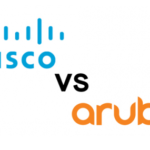What is OTV?
OTV also refered as “MAC ROUTING” is an encapsulation protocol that encapsulate L2 frames in IP packets in order to transport them between L2 domains.
When you configure OTV, you need 3 elements:
- Join interface
This is the interface that faces the IP core that will transport OTV encapsulated packets between sites. - Overlay Interface. This is the virtual interface that will handle the encapsulation and decapsulation of OTV packets sent between OTV edge devices.
- Inside interface This is the interface that receives the traffic that will be sent across OTV.
Before you can setup OTV in your environment there are a few important details to know:
- OTV adds 42 bytes of overhead into the packet header. This has implications if your MTU size is 1500 bytes (the default in most cases). You’ll need to either enable Jumbo frames across your core, or reduce the MTU size on your servers inside the OTV domain. UPDATE: You can enable OTV fragmentation by using the global command otv fragmentation join-interface. I don’t know if this has any performance implications, but at least it’s an option for you if changing the MTU throughout your network is difficult.
Basic Configuration :
Configure the Site Identifier and the Bridge-Domain on each Edge.
otv site-identifier “MAC”
otv site bridge-domain 100
Configure the Join interface.
interface X
mtu xxxx
ip address x.x.x.x x.x.x.x
ip pim passive
ip igmp version 3
Configure the Overlay interfaces.
interface OverlayX
otv control-group 239.1.1.1
otv data-group 232.1.1.0/28
otv join-interface X
no shutdown
Verify your configuration :
show otv adjency
show otv route
Adding VLANS to the Overlay.
interface X
service instance X ethernet
encapsulation dot1q X
bridge-domain X
!
interface Overlay1
service instance X ethernet
encapsulation dot1q X
bridge-domain X
Ref : https://brandonfarmer.com/2013/08/29/cisco-otv-overlay-transport-virtualization/





